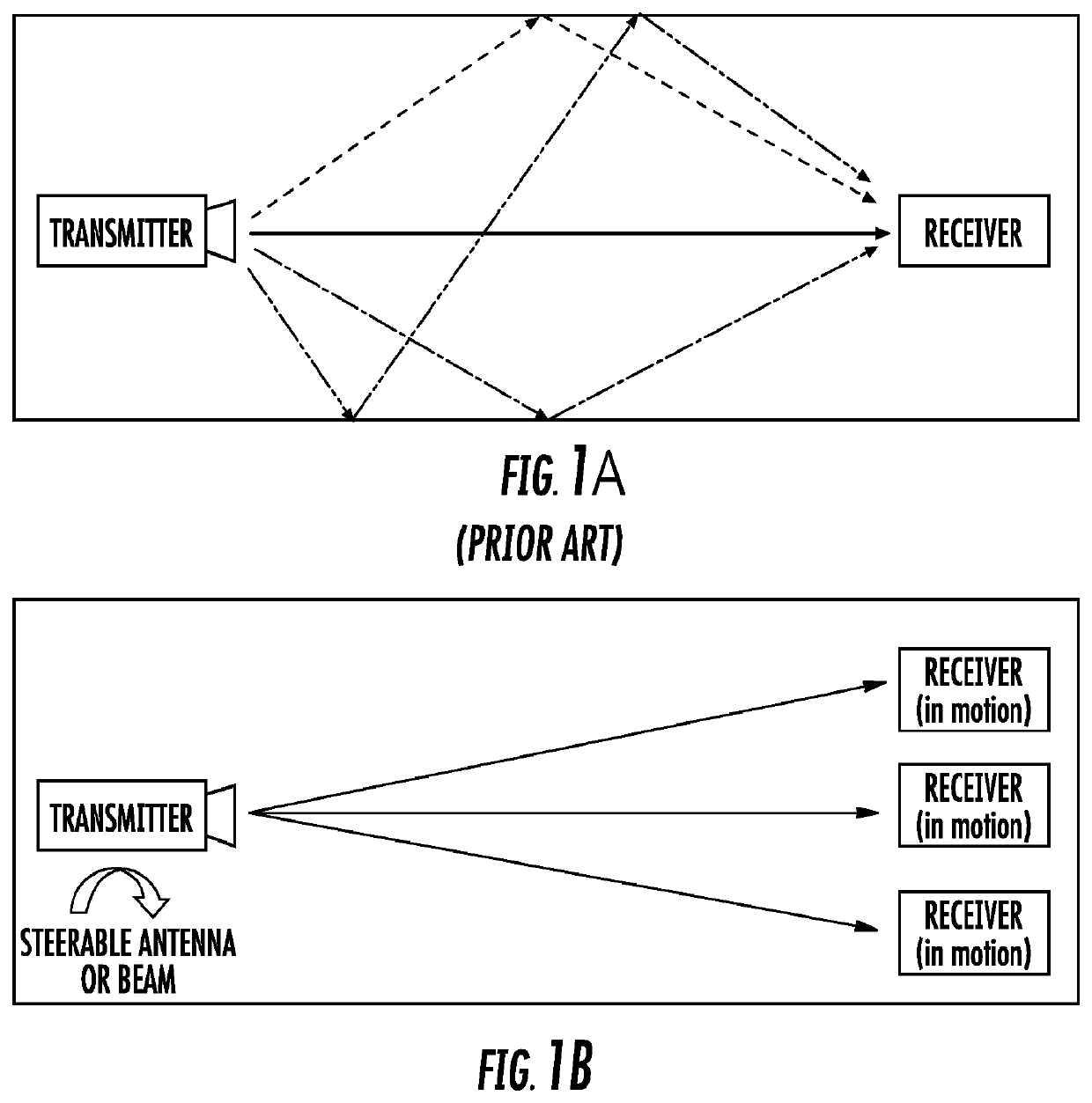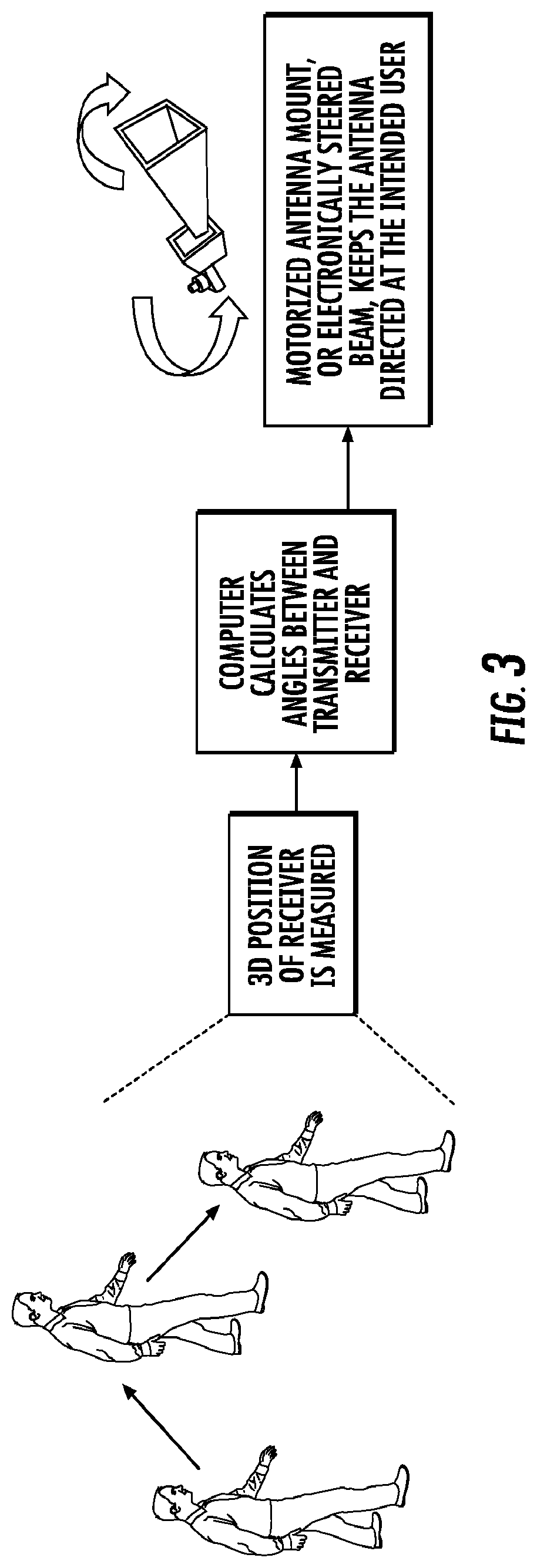Processes systems and methods for improving virtual and augmented reality applications
a technology of processing systems and applied in the field of virtual and augmented reality systems, can solve problems such as undesirable user tethered with electrical power or data carrying wires to any sort of system, lag time, and user tethered with electrical power or data carrying wires, and achieve the effect of reducing latency and low power consumption
- Summary
- Abstract
- Description
- Claims
- Application Information
AI Technical Summary
Benefits of technology
Problems solved by technology
Method used
Image
Examples
example 1
VR System
[0052]A virtual reality system is provided which includes a receiver for receiving a specially composited video / audio / data signal, a computing device, a three dimensional position tracker, and a transmitter having a steerable antenna. The system further includes a virtual reality headset. The receiver, headset and three dimensional position tracker are worn by a user with the three dimensional position tracker and the receiver placed in proximity of each other. A virtual reality or augmented reality session is initiated and the transmitter transmits the signal to the receiver. The user moves around while the user's movement is simulated and experienced through the headset which displays a video signal in addition to audio. The transmitter continuously transmits the user interaction in the augmented / virtual reality environment to the receiver in real-time to create an augmented or virtual reality environment. In order to prevent interruption in the signal that would disrupt ...
example 2
VR System with Remote Commands
[0053]A virtual reality system according Example 1 is provided that further embodies remote commands (instructions) from the computer or similar source, through the transmitter and its antennae, to the receiver proximal to the virtual reality user, such that the remote commands are received and interpreted following reception for local execution proximal to the receiver (virtual reality participant). A specific example would be a remote command to mute the microphone on the virtual reality headset, where the mute command would be executed within the virtual reality headset.
example 3
erations for Image Transposition
[0054]In at least one embodiment, the matrix of Am,n is relocated to create the relocated image of matrix A′m,n. Where
[0055]Am,n=A3,4andA3,4=⌈123456789101112⌉.
[0056]It is the original image pixels are relocated from bottom to top and left to right from the original image to the relocated image to create an intermediate matrix or relocated image A′m,n, where
[0057]Am,n′=A3,4′andA3,4′=⌈951106211731284⌉.
Thus upon completion of the inventive process, the matrix Am,n is relocated to the matrix A′m,n, transmitted as a relocated image, and received and simultaneously converted while being received, to the transposed matrix. Thus where
[0058]Am,nT=A4,3T,A4,3T=⌈951106211731284⌉.
The image represented by the matrix AT4,3 is the original image transposed to a portrait image orientation. It is appreciated that this is only an example and that various resolutions could be substituted into the process or matrix operations. By way of example a matrix for a 1920...
PUM
 Login to View More
Login to View More Abstract
Description
Claims
Application Information
 Login to View More
Login to View More - R&D
- Intellectual Property
- Life Sciences
- Materials
- Tech Scout
- Unparalleled Data Quality
- Higher Quality Content
- 60% Fewer Hallucinations
Browse by: Latest US Patents, China's latest patents, Technical Efficacy Thesaurus, Application Domain, Technology Topic, Popular Technical Reports.
© 2025 PatSnap. All rights reserved.Legal|Privacy policy|Modern Slavery Act Transparency Statement|Sitemap|About US| Contact US: help@patsnap.com



